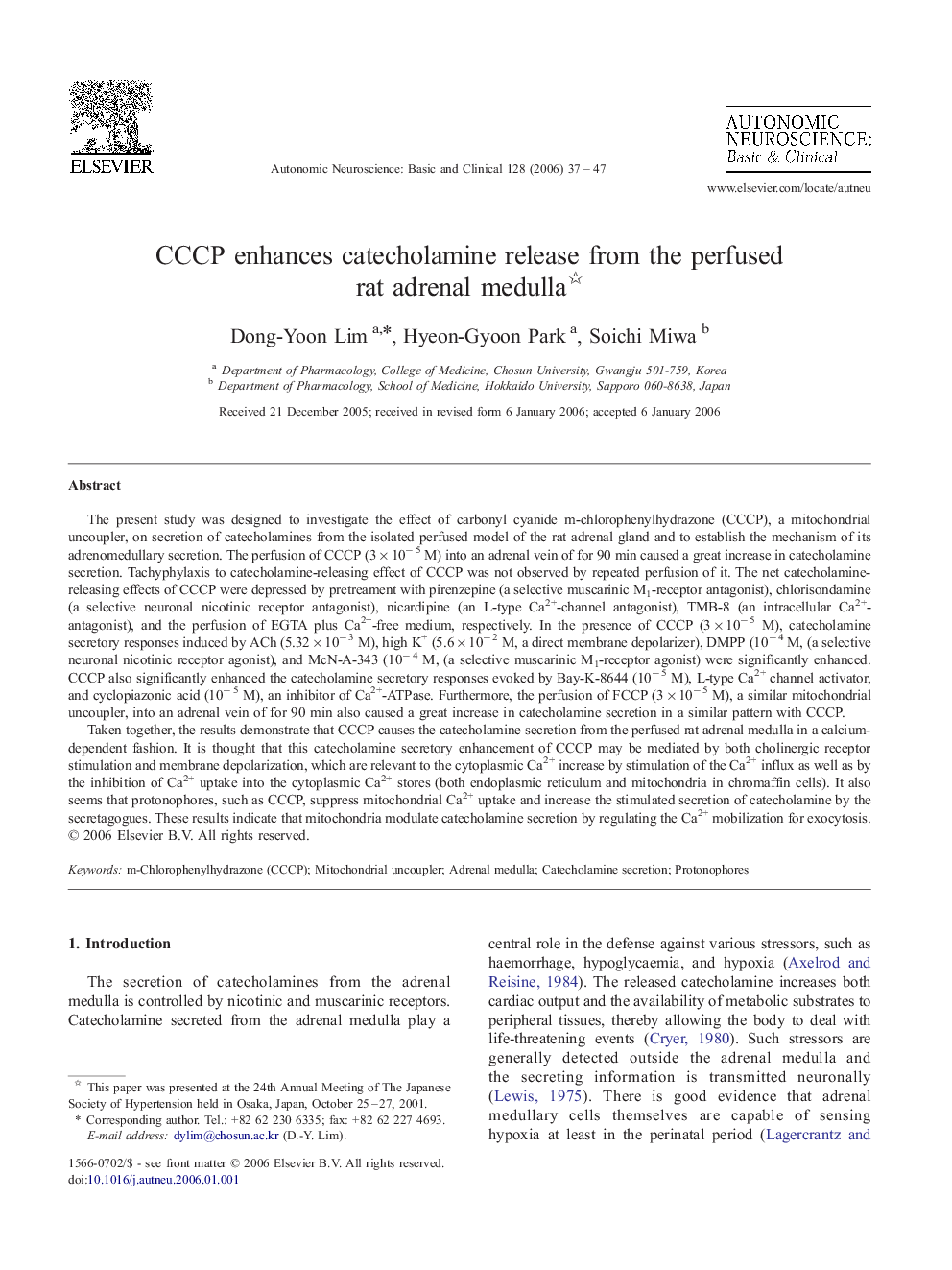| Article ID | Journal | Published Year | Pages | File Type |
|---|---|---|---|---|
| 3035934 | Autonomic Neuroscience | 2006 | 11 Pages |
The present study was designed to investigate the effect of carbonyl cyanide m-chlorophenylhydrazone (CCCP), a mitochondrial uncoupler, on secretion of catecholamines from the isolated perfused model of the rat adrenal gland and to establish the mechanism of its adrenomedullary secretion. The perfusion of CCCP (3 × 10− 5 M) into an adrenal vein of for 90 min caused a great increase in catecholamine secretion. Tachyphylaxis to catecholamine-releasing effect of CCCP was not observed by repeated perfusion of it. The net catecholamine-releasing effects of CCCP were depressed by pretreament with pirenzepine (a selective muscarinic M1-receptor antagonist), chlorisondamine (a selective neuronal nicotinic receptor antagonist), nicardipine (an L-type Ca2+-channel antagonist), TMB-8 (an intracellular Ca2+-antagonist), and the perfusion of EGTA plus Ca2+-free medium, respectively. In the presence of CCCP (3 × 10− 5 M), catecholamine secretory responses induced by ACh (5.32 × 10− 3 M), high K+ (5.6 × 10− 2 M, a direct membrane depolarizer), DMPP (10− 4 M, (a selective neuronal nicotinic receptor agonist), and McN-A-343 (10− 4 M, (a selective muscarinic M1-receptor agonist) were significantly enhanced. CCCP also significantly enhanced the catecholamine secretory responses evoked by Bay-K-8644 (10− 5 M), L-type Ca2+ channel activator, and cyclopiazonic acid (10− 5 M), an inhibitor of Ca2+-ATPase. Furthermore, the perfusion of FCCP (3 × 10− 5 M), a similar mitochondrial uncoupler, into an adrenal vein of for 90 min also caused a great increase in catecholamine secretion in a similar pattern with CCCP.Taken together, the results demonstrate that CCCP causes the catecholamine secretion from the perfused rat adrenal medulla in a calcium-dependent fashion. It is thought that this catecholamine secretory enhancement of CCCP may be mediated by both cholinergic receptor stimulation and membrane depolarization, which are relevant to the cytoplasmic Ca2+ increase by stimulation of the Ca2+ influx as well as by the inhibition of Ca2+ uptake into the cytoplasmic Ca2+ stores (both endoplasmic reticulum and mitochondria in chromaffin cells). It also seems that protonophores, such as CCCP, suppress mitochondrial Ca2+ uptake and increase the stimulated secretion of catecholamine by the secretagogues. These results indicate that mitochondria modulate catecholamine secretion by regulating the Ca2+ mobilization for exocytosis.
